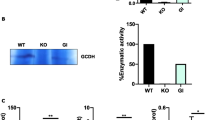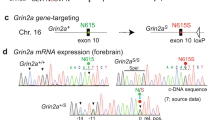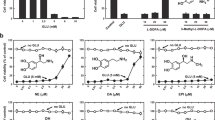Abstract
Glutaryl-CoA dehydrogenase deficiency (also known as glutaric aciduria type I) is an autosomal, recessively inherited neurometabolic disorder with a distinct neuropathology characterized by acute encephalopathy during a vulnerable period of brain development. Neuronal damage in this disease was demonstrated to involve N-methyl-d-aspartate (NMDA) receptor-mediated neurotoxicity of the endogenously accumulating metabolite 3-hydroxyglutarate (3-OH-GA). However, it remained unclear whether NMDA receptors are directly or indirectly activated and whether 3-OH-GA disturbs the intracellular Ca2+ homeostasis. Here we report that 3-OH-GA activated recombinant NMDA receptors (e.g. NR1/NR2A) but not recombinant α-amino-3-hydroxy-5-methyl-4-isoxazole propionate receptors (e.g. GluR-A/GluR-B) in HEK293 cells. Fluorescence microscopy using fura-2 as Ca2+ indicator revealed that 3-OH-GA increased intracellular Ca2+ concentrations in the presence of extracellular Ca2+ in cultured chick neurons. Similar to glutamate-induced cell damage, 3-OH-GA neurotoxicity was modulated by extracellular Na+. The large cation N-methyl-d-glucamine, which does not permeate NMDA receptor channels, enhanced 3-OH-GA-induced Ca2+ increase and cell damage. In contrast, 3-OH-GA-induced neurotoxicity was reduced after replacement of Na+ by Li+, which permeates NMDA channels but does not affect the Na+/Ca2+ exchanger in the plasma membrane. Spectrophotometric analysis of respiratory chain complexes I–V in submitochondrial particles from bovine heart revealed only a weak inhibition of 3-OH-GA on complex V at the highest concentration tested (10 mM). In conclusion, the present study revealed that NMDA receptor activation and subsequent disturbance of Ca2+ homeostasis contribute to 3-OH-GA-induced cell damage.
Similar content being viewed by others
Log in or create a free account to read this content
Gain free access to this article, as well as selected content from this journal and more on nature.com
or
Abbreviations
- 3-OH-GA:
-
3-hydroxyglutarate
- AMPA:
-
α-amino-3-hydroxy-5-methyl-4-isoxazole propionate
- CNQX:
-
6-cyano-7-nitroquinoxaline-2,3-dione disodium salt
- D-AP5:
-
(D)-(−)-2-amino-5-phosphonopentanoic acid
- GCDH:
-
glutaryl-CoA dehydrogenase
- GDD:
-
glutaryl-CoA dehydrogenase deficiency
- HBS:
-
HEPES-buffered saline
- MK-801:
-
(5R,10S)-(+)-5-methyl-10,11-dihydro-5H-dibenzo[a,d]cyclohepten-5,10-imine
- NaCaX:
-
Na+/Ca2+ exchanger of the plasma membrane
- NMDA:
-
N-methyl-d-aspartate
- NMG:
-
N-methyl-d-glucamine
- PM:
-
plasma membrane
- ROS:
-
reactive oxygen species
References
National Center for Biotechnology Information. OMIM™ Online Mendelian Inheritance in Man Web site. MIM #231670. Available at: http://www.ncbi.nlm.nih.gov/omim. Accessed May 8, 2002.
Goodman SI, Kohlhoff JG 1975 Glutaric aciduria: inherited deficiency of glutaryl CoA dehydrogenase activity. Biochem Med 13: 138–140
Goodman SI, Stein DE, Schlesinger S, Christensen E, Schwartz M, Greenberg CR, Elpeleg ON 1998 Glutaryl-CoA dehydrogenase mutations in glutaric acidemia (type I): review report of thirty novel mutations. Hum Mutat 12: 141–144
Zschocke J, Quak E, Guldberg P, Hoffmann GF 2000 Mutation analysis in glutaric aciduria type I. J Med Genet 37: 177–181
Greenberg C, Duncan AM, Gregory CA, Singal R, Goodman SI 1994 Assignment of human glutaryl-CoA dehydrogenase gene (GCDH) to the short arm of chromosome 19 (19p13.2) by in situ hybridization somatic cell hybrid analysis. Genomics 21: 289–290
Christensen E 1993 A fibroblast glutaryl-CoA dehydrogenase assay using detritiation of 3H-labelled glutaryl-CoA: application in the genotyping of the glutaryl-CoA dehydrogenase locus. Clin Chim Acta 220: 71–80
Hoffmann GF, Athanassopoulos S, Burlina AB, Duran M, deKlerck JBC, Lehnert W, Leonard JV, Monavari AA, Müller E, Muntau AC, Naughten ER, Plecko-Starting B, Superti-Furga A, Zschocke J, Christensen E 1996 Clinical course, early diagnosis, treatment, prevention of disease in glutaryl-CoA dehydrogenase deficiency. Neuropediatrics 27: 115–123
Bjugstad KB, Goodman SI, Freed CR 2000 Age at symptom onset predicts severity of motor impairment clinical outcome of glutaric acidemia type 1. J Pediatr 137: 681–686
Brismar J, Ozand PT 1995 CT MR of the brain in glutaric aciduria type I: a review of 59 published cases a report of 5 new patients. Am J Neuroradiol 16: 675–683
Ullrich K, Flott-Rahmel B, Schluff P, Musshoff U, Das A, Lücke T, Steinfeld R, Christensen E, Jakobs C, Ludolph A, Neu A, Roper R 1999 Glutaric aciduria type I: pathomechanisms of neurodegeneration. J Inherit Metab Dis 22: 392–403
Kölker S, Ahlemeyer B, Krieglstein J, Hoffmann GF 2000 Maturation-dependent neurotoxicity of 3-hydroxyglutaric glutaric acids in vitro: a new pathophysiologic approach to glutaryl-CoA dehydrogenase deficiency. Pediatr Res 47: 495–503
Lipton SA, Rosenberg PA 1994 Excitatory amino acids as final common pathway for neurologic disorders. N Engl J Med 330: 613–622
Sattler R, Tymianski M 2000 Molecular mechanisms of calcium-dependent excitotoxicity. J Mol Med 78: 3–13
MacDermott AB, Mayer ML, Westbrook GL, Smith SL, Barker JL 1986 NMDA-receptor activation increases cytoplasmic calcium concentration in cultured spinal cord neurons. Nature 321: 519–522
Albin RL, Greenamyre JT 1992 Alternative excitotoxic hypothesis. Neurology 42: 733–738
Beal MF 1992 Does impairment of energy metabolism result in excitotoxic neuronal death in neurodegenerative illnesses?. Ann Neurol 31: 119–130
De Mello CF, Kölker S, Ahlemeyer B, de Souza FR, Fighera MR, Mayatepek E, Krieglstein J, Hoffmann GF, Wajner M 2001 Intrastriatal administration of 3-hydroxyglutaric acid induces convulsions excitotoxic lesions in rats. Brain Res 916: 70–75
Kölker S, Ahlemeyer B, Krieglstein J, Hoffmann GF 2001 Contribution of reactive oxygen species to 3-hydroxyglutarate neurotoxicity in primary neuronal cultures from chick embryo telencephalons. Pediatr Res 50: 76–82
Köhr G, Eckardt S, Lüddens H, Monyer H, Seeburg PH 1994 NMDA receptor channels: subunit-specific potentiation by reducing agents. Neuron 12: 1031–1041
Mattson MP, Guthrie PB, Kater SB 1989 A role for Na+-dependent Ca2+extrusion in protection against neuronal excitotoxcitiy. FASEB J 3: 2519–2526
Hoyt KR, Arden SR, Aizenman E, Reynolds IJ 1998 Reverse Na+/Ca2+ exchange contributes to glutamate-induced intracellular Ca2+ concentration increases in cultured rat forebrain neurons. Mol Pharmacol 53: 742–749
Kiedrowski L 1999 N-methyl- d -aspartate excitotoxicity: relationship among plasma membrane potential, Na+/Ca2+ exchange, mitochondrial Ca2+ overload, and cytoplasmic concentrations of Ca2+, H+, and K+. Mol Pharmacol 56: 619–632
Grynkiewicz G, Poenie M, Tsien RY 1985 A new generation of Ca2+ indicators with greatly improved fluorescence properties. J Biol Chem 260: 3440–3450
Kölker S, Okun JG, Hörster F, Assmann B, Ahlemeyer B, Kohlmüller D, Exner-Camps S, Mayatepek E, Krieglstein J, Hoffmann GF 2001 3-Ureidopropionate contributes to the neuropathology of 3-ureidopropionase deficiency severe propionic aciduria: a hypothesis. J Neurosci Res 66: 666–673
Lowry OH, Roseborough NR, Farr AL, Randall RJ 1951 Protein measurement with the folin phenol reagent. J Biol Chem 193: 265–275
Okun JG, Lümmen P, Brandt U 1999 Three classes of inhibitors share a common binding domain in mitochondrial complex I (NADH:ubiquinone oxidoreductase). J Biol Chem 27: 2625–2630
Ziegler D, Rieske JS 1967 Preparation properties of succinate dehydrogenase coenzyme Q reductase (complex II). Methods Enzymol 10: 231–235
Percy JM, Pryde JG, Apps DK 1985 Isolation of ATPase I, the proton pump of chromatin-granule membranes. Biochem J 231: 557–564
Sinjorgo KMC, Durak I, Dekker HL, Edel CM, Hakvoort TBM, van Gelder BF, Muijsers AO 1987 Bovine cytochrome c oxidases, purified from heart, skeletal muscle, liver kidney, differ in the small subunits but show the same reaction kinetics with cytochrome c. Biochim Biophys Acta 893: 251–258
Brandt U, Okun JG 1997 Role of deprotonation events in ubihydroquinone: cytochrome c oxidoreductase from bovine heart yeast mitochondria. Biochemistry 36: 11234–11240
Mayer ML, Westbrook GL 1987 The physiology of excitatory amino acids in the vertebrate central nervous system. Prog Neurobiol 28: 197–276
Choi DW 1987 Ionic dependence of glutamate neurotoxicity. J Neurosci 7: 369–379
Trijbels FJ, Ruitenbeek W, Huizing M, Wendel U, Smeitinik JAM, Sengers RC 1997 Defects in the mitochondrial energy metabolism outside the respiratory chain the pyruvate dehydrogenase. Mol Cell Biochem 174: 243–247
Monyer H, Burnashev N, Laurie DJ, Sakmann B, Seeburg PH 1994 Developmental regional expression in the rat brain functional properties of four NMDA receptors. Neuron 12: 529–540
McDonald JW, Silverstein FS, Johnston MV 1988 Neurotoxicity of N-methyl-d-aspartate is markedly enhanced in developing rat central nervous system. Brain Res 459: 200–203
Landwehrmeyer GB, Standaert DG, Testa CM, Penney JB, Young AB 1995 NMDA receptor subunit mRNA expression by projection neurons interneurons in rat striatum. Neuroscience 15: 5297–5307
Goodman SI, Norenberg MD, Shikes RH, Breslich DJ, Moe PG 1977 Glutaric aciduria: biochemical morphological considerations. J Pediatr 90: 746–750
Hartley DM, Kurth MC, Bjerkness L, Weiss JH, Choi DW 1993 Glutamate receptor-induced Ca2+ accumulation in cortical cell culture correlates with subsequent neuronal degeneration. J Neurosci 13: 1993–2000
Stokke O, Goodman SI, Moe PG 1976 Inhibition of brain glutamate decarboxylase by glutarate, glutaconate, beta-hydroxyglutarate: explanation of the symptoms in glutaric aciduria type I?. Clin Chim Acta 66: 411–415
Bennett JP, Logan WJ, Snyder SH 1973 Amino acids as central nervous system transmitters: the influence of ions, amino acid analogues, ontogeny on transport systems forl-glutamicl-aspartic acids glycine into central nervous synaptosomes of the rat. J Neurochem 21: 1533–1550
Porciúncula LO, Dal-Pizzol A, Tavares RG, Coitinho AS, Emanuelli T, Souza DO, Wajner M 2000 Inhibition of synaptosomal [3H] glutamate uptake [3H] glutamate binding to plasma membranes from brain of young rats by glutaric acid in vitro. J Neurol Sci 173: 93–96
Tymianski M, Charlton MP, Carlen PL, Tator CH 1993 Source specificity of early calcium neurotoxicity in cultured embryonic spinal neurons. J Neurosci 13: 2085–2104
Sattler R, Charlton MP, Hafner M, Tymianski M 1998 Distinct influx pathways, not calcium load, determine neuronal vulnerability to calcium neurotoxicity. J Neurochem 71: 2349–2364
Hardingham GE, Arnold FJL, Bading H 2001 A calcium microdomain near NMDA receptors: on switch for ERK-dependent synapse-to-nucleus communication. Nat Neurosci 4: 565–566
Peng TI, Greenamyre T 1998 Privileged access to mitochondria of calcium influx through N-methyl-d-aspartate receptors. Mol Pharmacol 53: 974–980
Erecinska M, Dagani F 1990 Relationship between the neuronal sodium/potassium pump energy metabolism. Effects of K+, Na+, adenosine triphosphate in isolated brain synaptosomes. J Gen Physiol 95: 591–616
Kölker S, Okun JG, Ahlemeyer B, Wyse ATS, Hörster F, Wajner M, Kohlmüller D, Mayatepek E, Krieglstein J, Hoffmann GF 2002 Chronic treatment with glutaric acid induces partial tolerance to excitotoxicity in neuronal cultures from chick embryo telencephalons. J Neurosci Res 68: 424–431
Nowak L, Bregestovski P, Ascher P, Herbet A, Prochiantz A 1984 Magnesium gates glutamate-activated channels in mouse cerebral neurones. Nature 307: 462–465
Yu XM, Salter MW 1998 Gain control of NMDA-receptor currents by intracellular sodium. Nature 396: 469–474
Kölker S, Ahlemeyer B, Hühne R, Mayatepek E, Krieglstein J, Hoffmann GF 2001 Potentiation of 3-hydroxyglutarate neurotoxicity following induction of astrocytic iNOS in neonatal rat hippocampal cultures. Eur J Neurosci 13: 2115–2122
Wisden W, Seeburg PH, Monyer H 2000 AMPA, kainate and NMDA ionotropic glutamate receptor expression—an in situ hybridization atlas. In: Ottersen OP, Storm-Mathisen J (eds) Handbook of Chemical Neuroscience, Vol 18. Elsevier, New York, 99–143
Gegelashvili G, Schousboe A 1997 High affinity glutamate transporters: regulation of expression activity. Mol Pharmacol 52: 6–15
Christensen J, Sorensen JC, Ostergaard K, Zimmer J 2000 Early postnatal development of the rat corticostriatal pathway: an anterograde axonal tracing study using biocytin pellets. Anat Embryol (Berl) 200: 73–80
Land JM, Goulder P, Johnson A, Hockaday J 1992 Glutaric aciduria type I: an atypical presentation together with some observations upon treatment the possible cause of cerebral damage. Neuropediatrics 23: 322–326
Heyes MP 1987 Hypothesis: a role for quinolinic acid in the neuropathology of glutaric aciduria type I. Can J Neurol Sci 14: 441–443
Baric I, Zschocke J, Christensen E, Duran M, Goodman SI, Leonard JV, Müller E, Morton DH, Superti-Furga A, Hoffmann GF 1998 Diagnosis management of glutaric aciduria type I. J Inherit Metab Dis 21: 326–340
Acknowledgements
The authors thank P.H. Seeburg (Department of Molecular Neurobiology, Max Planck Institute for Medical Research, Heidelberg, Germany), H. Monyer (Department of Clinical Neurobiology, University of Heidelberg, Germany), and C.-M. Becker (Department of Biochemistry and Molecular Medicine, University of Erlangen, Germany) for fruitful discussions. We also thank S. Engel, S. Grünewald, and S. Exner-Camps for excellent technical support.
Author information
Authors and Affiliations
Corresponding author
Additional information
Supported by a grant from the Deutsche Forschungsgemeinschaft to S.K. (KO 2010/1-1) and by a junior grant from the University of Heidelberg to F.H. (Nr. 12/2001).S.K. and G.K. contributed equally to the study.
Rights and permissions
About this article
Cite this article
Kölker, S., Köhr, G., Ahlemeyer, B. et al. Ca2+ and Na+ Dependence of 3-Hydroxyglutarate-Induced Excitotoxicity in Primary Neuronal Cultures from Chick Embryo Telencephalons. Pediatr Res 52, 199–206 (2002). https://doi.org/10.1203/00006450-200208000-00011
Received:
Accepted:
Issue date:
DOI: https://doi.org/10.1203/00006450-200208000-00011
This article is cited by
-
The biochemical subtype is a predictor for cognitive function in glutaric aciduria type 1: a national prospective follow-up study
Scientific Reports (2021)
-
Toxic Synergism Between Quinolinic Acid and Glutaric Acid in Neuronal Cells Is Mediated by Oxidative Stress: Insights to a New Toxic Model
Molecular Neurobiology (2018)
-
Oxidative Stress, Disrupted Energy Metabolism, and Altered Signaling Pathways in Glutaryl-CoA Dehydrogenase Knockout Mice: Potential Implications of Quinolinic Acid Toxicity in the Neuropathology of Glutaric Acidemia Type I
Molecular Neurobiology (2016)
-
A cross-sectional controlled developmental study of neuropsychological functions in patients with glutaric aciduria type I
Orphanet Journal of Rare Diseases (2015)
-
The phenotypic spectrum of organic acidurias and urea cycle disorders. Part 1: the initial presentation
Journal of Inherited Metabolic Disease (2015)



